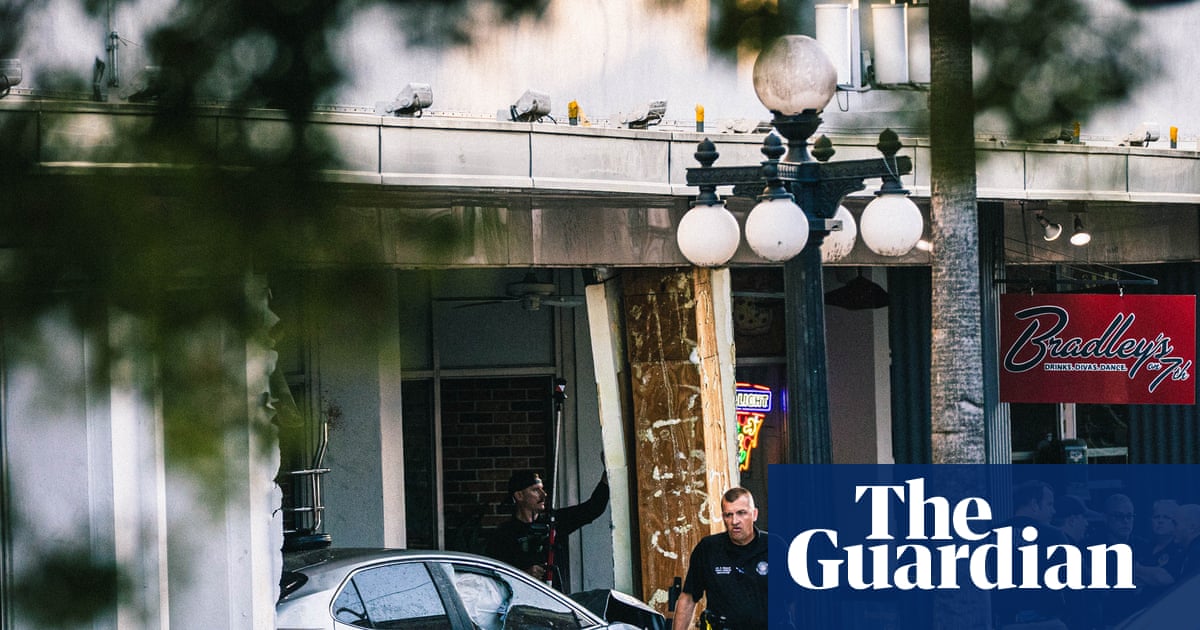Hanging is the preferred method of execution in Iran, although stoning and crucifixion offer alternative options for an ever-vengeful theocracy. Death by hanging is not necessarily quick. Strangulation and suffocation can take several minutes. The UN says more than 600 people have been judicially murdered so far this year. Iran has more executions per capita than any country in the world. Since June’s US and Israeli attacks, growing numbers of victims are political dissidents.
Fifty days on, nothing remotely positive has resulted from the illegal bombing raids and missile strikes mounted by the US president, Donald Trump, and Israel’s leader, Benjamin Netanyahu, despite their boasts of world-changing success. Iran’s nuclear facilities were not obliterated, as Trump claimed. Tehran has not abandoned uranium enrichment. The regime did not fall, despite Netanyahu’s call for an uprising. If anything, the supreme leader, Ayatollah Ali Khamenei, is more defiant. He has since launched a new crackdown on opponents, hence the executions.
Deploring last weekend’s hanging of political prisoners Behrouz Ehsani and Mehdi Hassani, Amnesty International linked their fate to the US-Israeli attacks. Arrested in 2022, the two men were charged with rebellion and “enmity against God”. They were tortured, forced to sign confessions and sentenced last year after a five-minute trial. The decision to execute them now “highlights the authorities’ ruthless use of the death penalty as a tool of political repression in times of national crisis to crush dissent and spread fear”, Amnesty said.
Hundreds have been arrested since June in a regime drive to unmask spies and collaborators, real or imagined. Glaring intelligence failures that, for example, allowed Israel to locate and bomb a national security council meeting, injuring Iran’s president, Masoud Pezeshkian, are officially blamed not on gross incompetence but supposed fifth columnists. Iran’s parliament wants to expand use of capital punishment. Up to 60 political prisoners face execution.
This typically harsh reaction by clerical hardliners around Khamenei, and within the judiciary and Revolutionary Guards, comes despite a surge in patriotic sentiment after the attacks, which reportedly killed at least 935 people, mostly civilians, and injured more than 5,000. By intensifying repression, the regime squandered a chance to harness public anger, not least against Britain and European governments that turned a blind eye.
US-Israeli actions have had other far-reaching, negative consequences. The attacks breached the UN charter and international law, as the Brics group of “global south” countries noted. They led Tehran to suspend UN nuclear inspections. They exacerbated US-Europe divisions. And, ironically, they increased the likelihood of Iran building a bomb for self-defence.
Iran insists it does not possess and does not want nuclear weapons. For all Israel’s vaunted intelligence capabilities, neither Netanyahu nor anyone else has definitively proved otherwise. The decision to attack was based on a guess, driven by fear and hatred. It caused serious physical damage, but did not change mindsets. Iran is adamant it will continue to enrich uranium for civilian purposes. The bombing was a bust. Trump’s angry threat to strike again is confirmation of failure.
What this reckless act of aggression did do is encourage rogue states such as Russia to believe they, too, may attack other countries with impunity. It reinforces the belief in Iranian ruling circles, and not only among rejectionist factions, that the west cannot be trusted and a closer alliance with China is necessary. It strengthens the hand of hardliners whose fondness for regional proxy warfare, and recently documented covert operations against Britain, has entrenched Iran’s pariah status.
Historically speaking, Iran was and is an avoidable tragedy – one of the west’s worst-ever geostrategic own goals. Unthinking support for the shah helped spur the 1979 revolution. The subsequent, far from inevitable ascendancy of conservative clerics plus abiding, irrational US animosity, feeding off memories of the humiliating Tehran embassy siege, rendered the rift permanent. Europe tried and failed to chart a middle path. In 2018, Trump reneged on the US-, UN- and EU-ratified nuclear deal with Tehran and reimposed sanctions. This last of many disastrous policy mistakes led directly to today’s impasse. With wiser heads, it could have been very different.
All parties to this conflict should study the French Enlightenment philosopher Charles de Secondat, baron de Montesquieu, a foe to tyranny in all its forms. Writing in his 1721 bestseller Persian Letters more than 300 years ago, he issues an impressively prescient warning about what were then imaginary weapons of mass destruction. “You say that you are afraid of the discovery of some method of destruction that is crueller than those which are used now,” his fictitious Persian traveller Usbek writes to a friend. “If such a fateful invention came to be discovered, it would soon be banned by international law. By the unanimous consent of every country the discovery would be buried.”
In the sense that nuclear weapons are outlawed, Usbek’s optimistic prediction was correct. But not “every country” complies. If the US and Israel are sincere about preventing Iran acquiring the bomb, they should set an example and reduce, and ultimately eliminate, their nuclear arsenals. They should stop threatening renewed attacks. And they should back talks on a regional nuclear pact, as proposed by Iran’s former foreign minister Mohammad Javad Zarif.
Only then, perhaps, will Tehran come in from the cold. Only then, perhaps, will its paranoid leaders stop hanging innocent people.
-
Simon Tisdall is a Guardian foreign affairs commentator

 3 months ago
106
3 months ago
106

















































